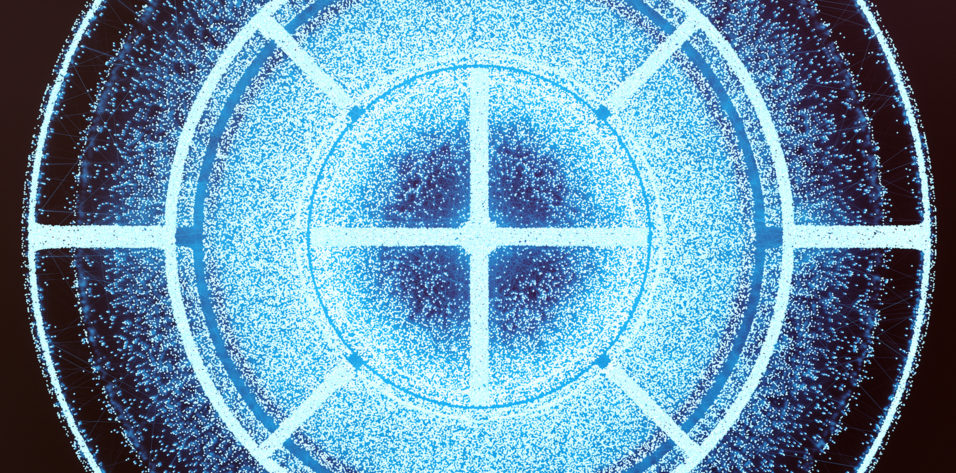
To optimize refractive outcomes after cataract extraction, surgeons must address astigmatism. Astigmatism of 0.75 D or greater will frequently compromise patients’ distance visual acuity, and therefore astigmatic correction should be incorporated as an essential part of any refractive cataract surgery procedure.1 Toric IOLs can provide excellent correction for regular astigmatism in the setting of cataract extraction or refractive lens exchange, but key steps must be considered. This article examines those steps and the tools needed to accomplish them.
One important step is to ensure that the IOL lines up correctly with the target axis. Each degree of toric misalignment causes approximately 3% of the toric power of the IOL to be lost. Therefore, if a toric lens is 30º off its intended axis, the toric effect is completely neutralized.2 There are two independent but equally critical steps to ensure optimal toric IOL alignment: intraoperative measurement to ensure that the steep meridian has been accurately determined and accurate alignment of the toric IOL once the steep meridian has been verified.
Studies have shown that eyes may undergo as much as 2º to 10º of cyclotorsion when patients lie flat.3 Therefore, it is important to mark the axis prior to surgery. Traditionally, the surgeon’s only option was to manually mark the eye with a marking pen while the patient was sitting upright. However, newer tools and technologies are now available to ensure proper alignment of the toric IOL.
MANUAL TOOLS
Despite an array of tools to determine axial alignment, many surgeons still utilize manual marking. Excellent results can be achieved when care is taken to properly mark the eye. Important tips include ensuring that the patient is sitting upright and staring at a distance target while the surgeon makes small, accurate marks. Weighted markers can assist in ensuring that the marks are as accurate as possible. Several types of markers are available, including bubble markers, pendular markers, tonometer markers, and so on. Also, one can rotate the slit beam on the slit lamp to the meridian of interest and mark it there.
The Robomarker (Surgilum) is a self-leveling corneal marker with pre-inked, sterile, disposable tips and an integrated fixation light. The fixation light helps to replicate the position of the patient’s eye that was identified when the astigmatism was measured preoperatively. The self-leveling component of the marker is a dual pendular weight system, and the marks are made by single-use, sterile-tip fins with a dry-marking formula. The device ensures that the surgeon is not creating error by tilting the marking pen. The marks themselves are small, helping to avoid the bleeding of ink that can occur if the surface is moist or a large pen tip is used. The tips are available in visible-spectrum or infrared formulas, the latter of which is helpful for marking prior to use of a femtosecond laser.
IMAGE-GUIDED TOOLS WITH MANUAL TECHNIQUES
Image-guided systems allow the surgeon to skip marking the axis preoperatively. These systems use preoperative images and intraoperative reference points to guide orientation of the lens. A simple approach is to capture anterior segment photographs prior to surgery with the patient sitting upright. Identifying landmarks such as vessels can then assist with determining the orientation of cardinal axis points. The IOLMaster 700 (Carl Zeiss Meditec) can print a grayscale image of the anterior segment, including limbal vessels. The device provides a suggestion for orientation of the lens based on the Barrett toric IOL power calculation formula.
Another device, the EyeSuite Toric Planner (Haag-Streit), features an incision optimization tool and integrates with the Lenstar biometer (Haag-Streit). Toric IOL calculation is accomplished with the integrated Barrett toric calculator, and the planning sketch can be printed and hung near the microscope.
AUTOMATED IMAGE-GUIDED SYSTEMS
More advanced, automated technology for image-guided toric alignment eliminates the need for printing and manual marking on the table. A systematic review of the literature found that image-guided systems were superior to conventional manual ink marking techniques for toric IOL alignment.4 Some of these devices also have programs that can assist in choosing the lens. To alleviate transcription error, the IOL axis can be transmitted directly from a biometer or topographer. Furthermore, image-guided surgery helps streamline the workflow in refractive cataract surgery.5
One such device, the Callisto (Carl Zeiss Meditec), integrates into the OPMI Lumera 700 (Carl Zeiss Meditec). Data are derived from in-clinic testing such as biometry with the IOLMaster 700 and entered into programs such as the Forum Cataract Workplace (Carl Zeiss Meditec) or manually entered. When direct biometry data are used, the image of the eye is taken with the keratometry measurement using OCT-assisted biometry. The Forum’s data-management module receives the biometric data, and the reference image is matched by the computer-assisted marker system for toric IOLs, facilitating the alignment of the patient’s eye and tracking the image in real time. The target axis is displayed as an overlay on the live image seen through a widefield microscope, allowing markerless toric IOL alignment.
Another device, the Verion (Alcon), automatically detects conjunctival and episcleral vessels and shows the steep axis relative to these landmarks. The suggested axis is determined based on preoperative imaging from the Verion reference unit, and this is then displayed on the digital marker that integrates with the LenSx femtosecond laser (Alcon) and most surgical microscopes. An upgrade to the Verion combines image guidance with intraoperative aberrometry, which is discussed later in this article.
Another available system is the TrueVision (TrueVision Systems), which uses the i-Optics topographer (Cassini) for imaging. One of the key features of the TrueVision system is its 3D heads-up display.
INTRAOPERATIVE ABERROMETRY
Despite using optimized preoperative measurements and alignment techniques, one can still have a refractive surprise due to variations in effective lens position. Intraoperative aberrometry allows the surgeon to perform aphakic readings to confirm the spherical lens power and pseudophakic readings to confirm the predicted outcome.
This technology can be used for toric lens selection and alignment as well. The aphakic reading gives a suggested lens choice, which the surgeon can confirm with preoperative data, and then the lens is inserted and oriented. A pseudophakic reading can then be taken to determine whether the toric IOL should be rotated clockwise or counterclockwise.
A limitation of this technology is that readings can be affected by a variety of factors such as corneal edema, dry eye changes, the lid speculum, etc. There is a learning curve for aberrometry, but studies including one by Hatch et al6 have shown that adjusting preoperative lens selection with intraoperative aberrometry resulted in less residual refractive astigmatism than standard toric IOL placement.
CONCLUSION
Addressing astigmatism is essential in order to meet the demands of patients for the best refractive outcomes. Achieving accurate alignment is the key to success with toric IOLs.
1. Thulasi P, Khandelwal S, Randleman JB. Intraocular lens alignment methods. Curr Opin Ophthalmol. 2016:27(1):65-75.
2. Ma JJ, Tseng SS. Simple method for accurate alignment in toric phakic and aphakic intraocular lens implantation. J Cataract Refract Surg. 2008;34:1631-1636.
3. Ciccio AE, Durrie DS, Stahl JE, Schwendeman F. Ocular cyclotorsion during customized laser ablation. J Refract Surg. 2005;21:S772-S774.
4. Panagiotopoulou EK, Ntonti P, Gkika M, et al. Image-guided lens extraction surgery: a systematic review. Int J Ophthalmol. 2019;12(1):135-151.
5. Mayer WJ, Kreutzer T, Dirisamer M, et al. Comparison of visual outcomes, alignment accuracy, and surgical time between 2 methods of corneal marking for toric intraocular lens implantation. J Cataract Refract Surg. 2017;43(10):1281-1286.
6. Hatch KM, Woodcock EC, Talamo JH. Intraocular lens power selection and positioning with and without intraoperative aberrometry. J Refract Surg. 2015;31:237-242.




